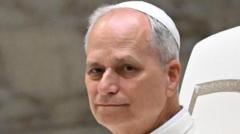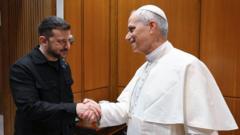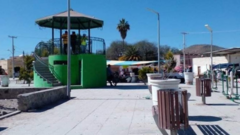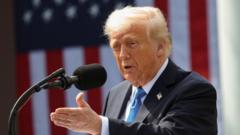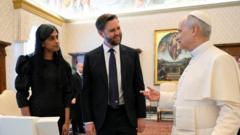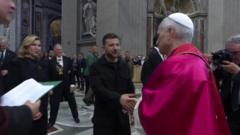The recent Papal summit has drawn attention for its groundbreaking approach to women’s roles within the Catholic Church, ushering in proposals promoting leadership opportunities. While the desired ordination of women as priests was not welcomed, advocates assert that the summit nevertheless marks a pivotal moment in a century-long struggle for greater female representation in spiritual authority.
Pope's Synod Concludes, Marks Milestone for Women in Church Leadership
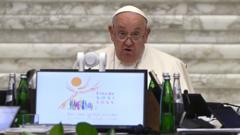
Pope's Synod Concludes, Marks Milestone for Women in Church Leadership
The Vatican summit culminates with a significant push for women's leadership in the Catholic Church, while still holding firm on priestly ordination exclusivity.
In a landmark event at the Vatican, a month-long synod concluded with a series of recommendations aimed at enhancing the leadership roles of women, although the issue of priestly ordination was notably absent from the discussions. The highly anticipated meeting, which brought together nearly 370 delegates, included 60 female participants—an unprecedented inclusion that sparked hope among progressive factions within the Church. Predominantly male, the synod ultimately voted on 151 proposals, all of which passed with the requisite two-thirds approval. However, the call for expanded leadership roles specifically for women saw the most dissent.
Despite advocates' hopes for women's ordination to the diaconate, the outcome reaffirmed the Catholic Church’s stance that only men may take on this role. Nevertheless, the concluding document asserted that there should be “no reason or impediment” preventing women from undertaking leadership positions within the Church hierarchy. Critics have underscored an ongoing disparity given the male-dominated clergy and lamented the absence of mentions concerning the integration of the LGBT+ community; no explicit acknowledgement of such individuals was made, though a reference to “those who feel excluded” was included.
Responses to the synod have varied. Progressive groups express disappointment over the lack of explicit recognition for the LGBT+ community and formalizing women as deacons. Prominent clerics like Reverend James Martin noted that the absence of specific language targeting LGBT+ issues was anticipated. Meanwhile, traditional factions are resistant to the liberal direction presented by Pope Francis, who views the engagement of lay Catholics as vital for the Church's evolution.
The Pope's vision represents a significant shift in a Church historically characterized by rigid hierarchy, and many within the Catholic community see it as a necessary step toward inclusivity. While results may not satisfy all factions within the Church, the wave of change brought on by this summit is palpable, aiming to strengthen the connection between the Church's leadership and its 1.4 billion worldwide adherents.
Catholic Church Reform, Pope Francis, Women Leadership, LGBT Community, Vatican Summit.
Despite advocates' hopes for women's ordination to the diaconate, the outcome reaffirmed the Catholic Church’s stance that only men may take on this role. Nevertheless, the concluding document asserted that there should be “no reason or impediment” preventing women from undertaking leadership positions within the Church hierarchy. Critics have underscored an ongoing disparity given the male-dominated clergy and lamented the absence of mentions concerning the integration of the LGBT+ community; no explicit acknowledgement of such individuals was made, though a reference to “those who feel excluded” was included.
Responses to the synod have varied. Progressive groups express disappointment over the lack of explicit recognition for the LGBT+ community and formalizing women as deacons. Prominent clerics like Reverend James Martin noted that the absence of specific language targeting LGBT+ issues was anticipated. Meanwhile, traditional factions are resistant to the liberal direction presented by Pope Francis, who views the engagement of lay Catholics as vital for the Church's evolution.
The Pope's vision represents a significant shift in a Church historically characterized by rigid hierarchy, and many within the Catholic community see it as a necessary step toward inclusivity. While results may not satisfy all factions within the Church, the wave of change brought on by this summit is palpable, aiming to strengthen the connection between the Church's leadership and its 1.4 billion worldwide adherents.
Catholic Church Reform, Pope Francis, Women Leadership, LGBT Community, Vatican Summit.


